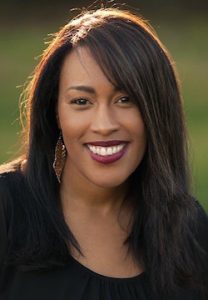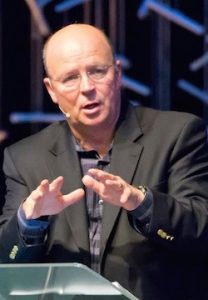Does God Still Heal? Scholars Examine Evidence
Many debate whether the gifts and power of the Holy Spirit are for today. In advance of Pentecost, Christian leaders and medical researchers provide insights.
Part one of a series on “Pentecost and the Holy Spirit Today.”
The African schoolgirl stared up into the sky. She was surrounded by a crowd of other children, as well as men and women. Many had come to hear a message of hope from missionaries. But the girl could barely hear, and could not speak at all. Now a woman from America had come near to pray for her.
In summer 2006, a friend who recently graduated from Princeton University invited 20-something Dehavilland Ford to participate in the missions ministry of Iris Global. Ford felt she had faith yet was uneasy with a situation so foreign to her.
“In certain parts of Africa, it’s really hard to get to hospitals and receive the kind of medical attention we have here in the United States,” says Ford. “They bring all the sick to these meetings. They bring the deaf and the lame.”
Simple Prayer of Faith
One day, the ministry team led by Heidi Baker trekked to a remote village deep in what they call “the bush” — many miles from their central base in Pemba, Mozambique.

Dehavilland Ford
A hundred villagers gathered, including many sick or facing disability. Baker preached the gospel through a translator and sign language. Then she motioned for those unable to hear and speak, that it was time to pray for them.
“I’m not going to just pray for you,” said Baker. “I’m going to release my team because they have the same Holy Spirit I have.” Ford suddenly felt particularly insecure. “I remember going out into crowd thinking, Oh God, I’m not Heidi!?”
In the throng of people, she saw a girl who looked about 11 years old. Through basic signs and a translator, Ford learned the girl was mute and deaf in one ear. “I can see her face as I’m talking to you,” recalls Ford. “She was really young. I could see the rejection on her, like she had been mocked by the other kids.”
The woman softly laid her hands on the girl’s ears. As the schoolgirl stared up at the sky, Ford prayed a simple prayer. Suddenly, the girl uttered a sound.
She quietly said her name, then began to shout it. Ford believes she witnessed a miraculous healing that day. Dozens around them also reported being able to hear and speak as never before.
“The trip revolutionized my Christian walk from that moment on,” says Ford.
Foolishness, Fanaticism, or Holy Fire?
The activity of the Holy Spirit among Christians has been contentious for centuries. Recently, many respected evangelical authors have examined the supernatural closer. Eric Metaxas spent years researching his 354-page tome Miracles. Last month, former journalist Lee Strobel released The Case for Miracles.
Weeks ago Scot McKnight published Open to the Spirit, urging believers to see how Scripture supports supernatural experiences. A professor of New Testament at Northern Seminary, his views reflect a synthesis of many evangelical streams.
“I grew up being very skeptical of the Holy Spirit,” says McKnight in an interview with The Stream. “I saw so many goofy things, abuses and misuses of the spiritual gifts.”
Even in his early years, differing views created personal conflicts. “My grandmother was a Holiness Pentecostal,” he says. “She didn’t believe her own family were Christians, because none of us had spoken in tongues! As a ten year-old kid, I saw wild phenomena in her church that would make your jaw drop.”
His book captures scenes from that Apostolic Holiness Church in southern Illinois. From people rushing the altar midway through service to an eruption of prayer among all congregants at once, it differed from his Baptist roots. So did the amusing beehive hairdos.
Such experiences scratch the surface of what Dr. Michael Brown unveils in Playing with Holy Fire. It follows in the vein of his bestseller Hyper-Grace, which called prosperity preachers to account. This time, the seminary teacher offers a rebuke to fellow charismatics engaged in outrageous activity.
“We have to bring correction so that God can take us deeper.”
– Dr. Michael Brown
Brown cites several disturbing anecdotes. One lead singer “used mild profanity to end a worship time” to show his spiritual freedom. A prophet in South Africa encouraged church members to drink a potentially lethal disinfectant to receive healing. And a Colorado group called Stoner Jesus urged students to inhale marijuana while they “hash out” the meaning of Scriptures.
“We have to bring correction so that God can take us deeper,” says Brown in an interview. “The Holy Spirit is not a sensationalist display. He is not to make us look good or for our own self-exaltation.”
The scholars see an antidote to foolish and carnal practices. “We need to ground these experiences in things we clearly see in Scripture,” states McKnight.
Roots of the Modern Charismatic Movement
In his book, Scot McKnight unpacks dozens of New Testament passages to illuminate the third member of the Trinity. “The Holy Spirit’s mission is to glorify Christ,” he says. “Wherever Christ is being glorified, we know the Spirit is at work there.”

Prof. Scot McKnight
He traces back the current charismatic movement to surprising roots. “The charismatic movement derives from the Holiness tradition in the United States,” he says. “The Holiness tradition derives from the Great Awakenings — from John Wesley and George Whitefield, to Charles Finney and Jonathan Edwards.”
“There are no leaders in the history of the church more concerned with and marked by holiness than the fountains of the Holiness movement itself,” says McKnight. Known for esteeming the Word of God and holding to high moral standards, the Pentecostal-Holiness movement gained prominence in the early 20th century.
One figure in this era known for faith healing was Aimee Semple McPherson, who founded the Foursquare denomination. Female preachers were less accepted then, and miracles met with skepticism. In his 1993 biography of McPherson, popular Jewish historian Daniel Mark Epstein recounts how physicians from the American Medical Association came to confirm her work.
“The report from the AMA of San Francisco stated that the work of Aimee Semple McPherson met with their approval in every way, that the healing was ‘genuine, beneficial and wonderful,’” writes Epstein. McPherson’s parsonage next to Angelus Temple in Los Angeles still stands, including a room displaying dozens of discarded wheelchairs and crutches.
Half a world away in London, England, another such room exists in a stained glass cathedral. A contemporary of McPherson’s, George Jeffreys led healing meetings at Kensington Temple during the first half of the 20th century. Thousands came and many left leg braces and wheelchairs, rediscovered in recent years. Located in London’s West End district, the church continues to hold to its Pentecostal roots.
“These are people who constantly emphasized the Holy Spirit,” says McKnight. “There ought to be a reserve not to believe every external manifestation that is claimed to be of the Holy Spirit. Yet I don’t want to be afraid of the Spirit or to quench the Spirit.”
It raises the question: does evidence exist of supernatural healings today?
When Researchers Went to Study Faith Healing
In June 2009, a research team from Indiana University journeyed to rural Mozambique. Iris Global, led by Heidi and Rolland Baker, has ministered to orphans in this region for decades. The researchers were tasked with studying whether the ongoing reports of healing from blindness and hearing loss were factual.
Dr. Candy Brown and her team carefully charted tests of two dozen Mozambicans, before and after prayer. Their results published in the peer-reviewed Southern Medical Journal astounded the world. “Both auditory and visual improvements were statistically significant across the tested populations,” the researchers concluded.
Dr. Candy Brown and her team charted tests of two dozen Mozambicans, before and after prayer. Their results published in the peer-reviewed Southern Medical Journal astounded the world. “Both auditory and visual improvements were statistically significant across the tested populations,” researchers concluded.
Now leading a ministry in the Dallas area, Dehavilland Ford speaks often of what she witnessed in 2006. “I had never experienced a move of the Holy Spirit like that before, nor have I seen it since,” she says. “Look at the fruit of those lives. After these encounters, they shared their testimonies and the gospel in their villages. That province in Mozambique has been revolutionized by the power of God.”
McKnight takes a cautious approach. “I affirm the possibility and genuineness of Spirit-born, Spirit-prompted healings,” he says. “Now I have never personally witnessed some kind of dramatic healing. Many friends whom I trust and work with participate in such ministry and attest to seeing healings happen.”

Dr. Michael Brown
While also in academia, Michael Brown testifies to personal involvement in healing prayer. “I’m an eyewitness to the Holy Spirit’s mighty works around the world for the last 40-plus years,” he says. “It’s harder and harder to deny it — including quadriplegics healed, people with debilitating MS, even in some cases documentation of the dead being raised.”
He recalls a particular service in the late 1980’s when he was ministering in Rochester, New York. “This one woman was on her way in for surgery, to take out a cancerous tumor,” says Brown. “I prayed for her at the altar, and she said she felt something jump in her stomach.”
According to her pastor, the woman went straight to the hospital and was put under anesthesia for the surgery. Brown recounts the report: they found no tumor.
“I firmly believe in the great outpouring of the Holy Spirit taking place around the world,” he says. “There is massive documentation for divine healing today. My friend Randy Clark did his doctoral dissertation on people healed who had steel implants in their bodies.”
He remarks with a smile: “This is a pretty easy thing to document!”
Eternal Truths, Imperfect Expressions
A proponent of charismatic practices, Brown nonetheless has concerns about abuses of sound theology he has seen across the U.S. and beyond. He seeks solutions in the Bible to common errors and excesses.
“I truly believe that God wants to pour out His Spirit more than we’ve ever seen,” says Brown. “If that’s to happen, we have to set our house in order. Through the gifts, the Holy Spirit touches a hurting and dying world — for the glory of God.”
McKnight believes such course-correction cannot come soon enough. “Something happened in the charismatic movement that glorified freedom and tolerance, an attitude of I-won’t-judge-you-if-you-won’t-judge-me,” he says. “It has led to a corruption of Spirit-prompted holiness.”
Sharing a love for Scripture, the diverse scholars have much to say about ministry integrity, worship and the value of tangibly experiencing God. Addressing cynical emerging generations, Brown believes the work of the Holy Spirit activates faith.
“I much prefer the noise of the maternity ward to the quiet of the cemetery,” he says. “But in the maternity ward, you have a lot of things you have to clean up. That’s the case in our movement.”
Newly released titles Open to the Spirit by Scot McKnight and Playing with Holy Fire by Michael Brown are now available. Learn more about Dehavilland Ford at 818 The Sign. Watch for further interviews as this series continues — including with voices in the Catholic charismatic renewal.



